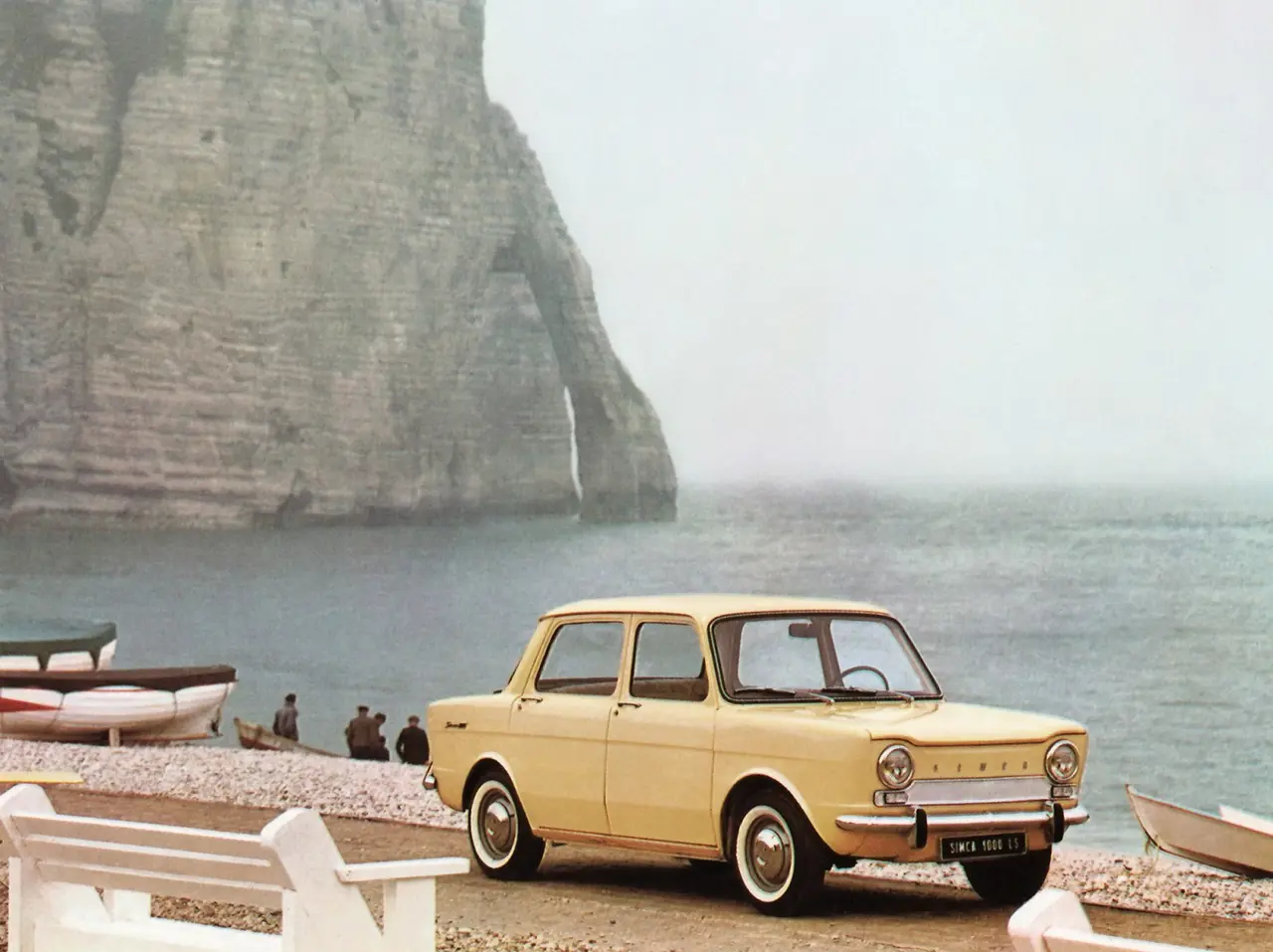SIXTY YEARS OF THE SIMCA 1000
22 October 2021
On the 27th July 1961, Simca commenced building a car that was to dominate French roads until the late 1970s. The 1000 was also a popular choice with British motorists, especially those who aspired to hipness, i.e. wearing dark glasses in the local Co Op and pretending to understand Jean-Luc Godard’s films. Sadly, a mere 20 are believed to remain on the road in the UK.
The origins of the 1000 date back to the aftermath of the 1956 Suez Crisis. At that time Simca – La Société Industrielle de Méchanique et de Carrosserie Automobile – was finding sales of their V8 engine Vedette flagship severely affected by petrol shortages. The solution was a new model, one smaller than their medium-sized Aronde, which would compete with the Renault Dauphine.

As Keith Adams notes in Aronline: “Given that Simca was closely tied to Fiat, and had been since (Henri Théodore) Pigozzi set-up Simca to build its cars under licence in 1934, it was logical that he also approached the Italian company to submit its ideas on how a mini-Simca should look.”
Fiat was Simca’s majority shareholder until 1963, and so ‘Projet 950’ was partially inspired by their 600. Power was from a five bearing inline water-cooled 944cc unit, and the four-speed gearbox employed Porsche baulk ring synchromesh. Such engineering reflected Pigozzi’s desire that the future ‘1000’ would be an up-to-the minute design.
The press launch took place on the 6th October 1961 at the Montlhérey race track, and four days later, the 1000 made its public debut at the Paris Salon. Naturally, there was considerable interest in the first rear-engine Simca, while Mario Revelli de Beaumont’s styling made the Dauphine look faintly dated by comparison.
The 1000 proved a success in the French ‘5CV’ class; by the end of 1962, over 160,000 examples had left the Poissy factory. On the other side of the Channel, the Simca cost a fairly steep £758 – more than £100 more than a Mini De Luxe – but it did offer the buyer a blend of four doors and Gallic charm. William Boddy of Motor Sport regarded the Mille as “not only nice to drive and bright to look at, but it shouldn’t cost much to run”.
The British sales copy promised a new world of “carefree driving” plus “control tower visibility”, so telephone GLAdstone 1136 to arrange a test drive. Keen motorists appreciated the 35/65 weight distribution while the specification included a heater with a two-speed fan and windscreen washers. However, the early 1000s had no ignition key; starting was via a rotary switch on the steering column.
September of 1962 saw the more opulent Special debut, which Autocar described as “a chunky and willing little chap”. In 1963 the 1000 became familiar to the nation’s ITV viewers as a Simca costarred with Patrick Allen and Sam Kydd in the Associated-Rediffusion series Crane. Each week our hero Richard Crane would look suave and fight crime in Casablanca – cue the theme tune from Kenny Ball and His Jazzmen:
Alas, just two episodes are thought to survive.
That year saw Chrysler acquire a majority share in Simca, and the 1000 was promoted as the perfect alternative to the US market VW Beetle. It was also sold as the ideal vehicle for the ladies, one advertisement promising the “1965 economy car for every member of the family”.
Production of the 1000 ended in 1978, and it will take another blog to do justice to the remarkable Abarth and Rallye versions. For now, here is one of Simca’s most essential models starring in what is possibly the greatest car commercial of all time.
Why choose Lancaster Insurance?
Here at Lancaster, we love classic cars as much as you do and we understand what it takes to protect them for future generations.
We have links with some of the top classic car clubs around the country and some of our policies even offer discounts of up to 25% for club members.
Other benefits of classic car insurance through Lancaster can include:
- Historic rally cover
- Static show cover
- Limited mileage discounts
- Choice of repairer
- 24-hour claims helpline
Give your classic the protection it deserves and get a quote for your classic motor today.
